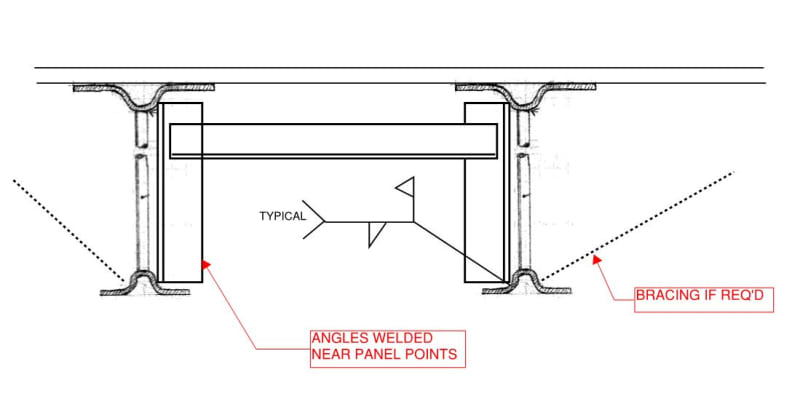I am evaluating some circa 1957 '22S8' joists (confirmed from tag) for additional 250 lb point loads. After reviewing the allowable load tables, I am confident the joists can support the load, but am looking for opinions on the method of connecting the supporting equipment. The joist top and bottom chords are 1/4" formed steel, and the webs are 3/4" dia. rod (see attached sketch). The weld of the web to the chords is so minimal I'm concerned about it giving out if I hang equipment from the bottom chord. (Modern S-series joists have a better weld between the web and chord members). I am proposing to run threaded rod thru the top chord for supporting unistrut or similar cross member to the adjacent joists. The roof material is not metal deck, more like a rigid insulation sheeting; I think it could be removed as needed to allow a fastener nut above the top chord flange.
Any opinions or advice on this proposed support method?
Any opinions or advice on this proposed support method?

